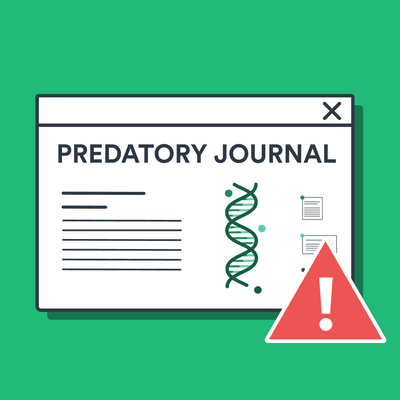Introduction:
The scholarly publishing landscape has seen a surge in the number of journals in recent years, providing researchers with diverse platforms to share their findings. However, this proliferation has also given rise to predatory journals that exploit the academic publishing system for financial gain, jeopardizing the integrity of scientific research. Detecting predatory journals is crucial for maintaining the credibility of academic discourse and safeguarding the reputation of researchers. In this article, we will explore various strategies and indicators to help identify and combat predatory journals.
Understanding Predatory Journals:
Predatory journals are characterized by unethical practices, often driven by a profit motive rather than a commitment to scholarly communication. These journals typically lack rigorous peer-review processes, publish low-quality or plagiarized content, and engage in deceptive practices to attract submissions and fees. Recognizing these traits is essential for researchers to make informed decisions about where to publish their work.
Key Indicators of Predatory Journals:
Lack of Transparency:
Legitimate journals provide clear information about their editorial board, review process, and publication fees. Predatory journals often lack transparency, making it difficult for authors to assess the legitimacy of the journal. Researchers should scrutinize the journal’s website for comprehensive information on its operations.
Rapid Publication without Peer Review:
Predatory journals often promise swift publication without a thorough peer-review process. Legitimate journals uphold rigorous peer review to ensure the quality and validity of published research. Authors should be cautious of journals that guarantee quick acceptance and publication.
Unsolicited Email Invitations:
Researchers frequently receive unsolicited emails inviting them to submit articles to predatory journals. Legitimate journals typically do not aggressively solicit manuscripts via email. It is advisable to investigate the reputation of the journal and the legitimacy of the invitation.
Dubious Impact Factor and Indexing Claims:
Predatory journals often claim to have high impact factors or indexing in reputable databases without evidence. Researchers should verify such claims by checking recognized indexing services like PubMed, Scopus, or Web of Science. A legitimate journal’s impact factor can be confirmed through the Journal Citation Reports.
Low Publication Standards:
Predatory journals accept articles with minimal scrutiny, often regardless of the quality of the research. Authors should be cautious if a journal accepts submissions without proper peer review or if there are grammatical errors and inconsistencies in the published articles.
Excessive Publication Fees:
While legitimate journals may charge reasonable publication fees to cover costs, predatory journals often charge exorbitant fees without providing the necessary editorial and publishing services. Authors should carefully assess publication fees and compare them to industry standards.
Inadequate Editorial Board Information:
Legitimate journals showcase their editorial boards with details about the affiliations and expertise of board members. Predatory journals may list fake or non-existent editorial boards. Researchers should verify the credentials of editorial board members to ensure legitimacy.
Combating Predatory Journals:
Use Trusted Directories:
Researchers should consult reputable journal directories, such as the Directory of Open Access Journals (DOAJ) or the Committee on Publication Ethics (COPE), to identify trustworthy journals. These directories maintain strict criteria for inclusion, helping researchers distinguish between legitimate and predatory journals.
Check Indexing Services:
Verify the journal’s indexing status using established databases like PubMed, Scopus, and Web of Science. Legitimate journals go through a rigorous evaluation process to be indexed, providing an additional layer of assurance regarding their credibility.
Consult Colleagues and Mentors:
Seek advice from experienced colleagues and mentors when choosing a journal for publication. They may share their experiences and provide valuable insights into reputable journals within a specific field.
Scrutinize the Journal’s Website:
Thoroughly examine the journal’s website for transparency, editorial policies, and peer-review processes. Legitimate journals prioritize clear communication, ensuring authors have access to all relevant information.
Utilize Predatory Journal Checklists:
Various organizations and institutions provide checklists and guidelines to help researchers identify predatory journals. These resources outline red flags and best practices for evaluating journal legitimacy.
Conclusion:
Detecting and combatting predatory journals is crucial for maintaining the integrity of scholarly publishing. Researchers play a vital role in this process by staying informed, scrutinizing journal practices, and utilizing reputable resources. By adhering to ethical publication standards and promoting transparency, the academic community can collectively work towards a publishing environment that fosters genuine scientific advancement.
Editing More than 200,000 Words a Day
Send us Your Manuscript to Further Your Publication.








Is ChatGPT Trustworthy? | Rovedar | Scoop.it says:
ChatGPT vs. Human Editor | Rovedar | Scoop.it says:
Enhancing Your Assignments with ChatGPT | Roved... says: